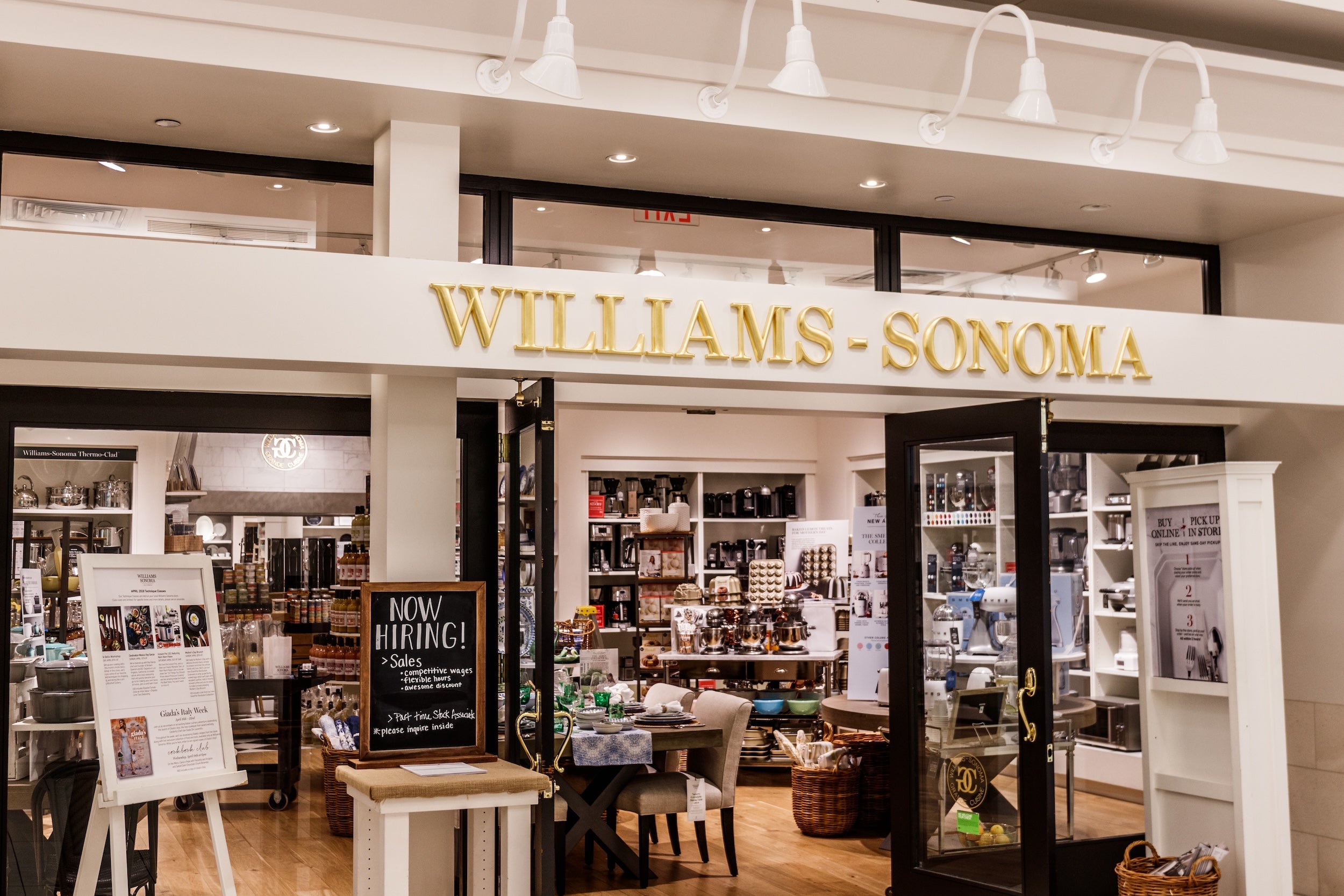Looks like Williams-Sonoma could use an extra-thick layer of that Teflon-like coating it uses on the pans in its namesake kitchenware stores.
In reporting its first-quarter results on Wednesday, which continued its recent declines in total revenues even as its bottom line improved, the multibrand home furnishings retailer beat analyst forecasts. That hasn’t stopped its stock from getting slammed from recent trading levels in the low $300-a-share range. After shooting up as high as $343 a share at the market’s opening on Wednesday, it plummeted to around $280 when the bell rang the following day; by the close of trading on Thursday, it hovered at around $284.
This negative volatility is something Williams-Sonoma rarely sees. The company has struggled through the home furnishings slowdown like most of its retail counterparts, but has thus far managed to keep investors upbeat with smaller declines and optimistic forecasts.
That positive outlook continued with this earnings report, as CEO Laura Alber affirmed the company’s guidance of annual net revenue growth of -3 percent to 3 percent for the fiscal year. She added that the company is raising its guidance on operating margins for the fiscal year and that “over the long-term, we continue to expect mid-to-high single-digit annual net revenue growth with an operating margin in the mid-to-high teens.”
Nonetheless, the stock activity had to be jarring for the company, at least compared to others in the home furnishings space, like RH and Arhaus, and even those in the broader home-related retail sector, like Home Depot and Lowe’s. While they, too, have reported declining revenues over the past several quarters, few have seen the precipitous drops in share prices that Williams-Sonoma did this week.
In a decline of net revenues from $1.76 billion a year ago to $1.66 billion for the first quarter of 2024—a drop of around 6 percent—Williams-Sonoma did show a smaller falloff than in previous quarters. What may have spooked investors was the bigger drop in business for Pottery Barn, its largest brand. Those revenues declined 10.8 percent, significantly larger than its 0.4 percent drop a year ago. Its other furniture-driven unit, West Elm, had a 4.1 percent drop in sales, but that was significantly better than the 15.8 percent decline a year ago. The Williams-Sonoma kitchen division was essentially flat, up 0.9 percent, and only the Pottery Barn Kids and Teen division showed any meaningful gains, up 2.8 percent.
Alber, in trying to put these numbers into perspective in a CNBC interview on Wednesday, admitted the furniture sector is tough. “The customer isn’t shopping for as much furniture as they were because of the housing slump,” she told Jim Cramer, noting that Williams-Sonoma is trying to focus on its non-furniture categories—what she called “easy updates,” or “things that you do to improve your house even when you’re not moving.”
“We’re not just a furniture brand, you know,” she said. “We have seasonal holidays, we have collaborations, we celebrate life-stage events. And that’s what’s given us a lot of resilience even in what’s a more difficult market.”





























